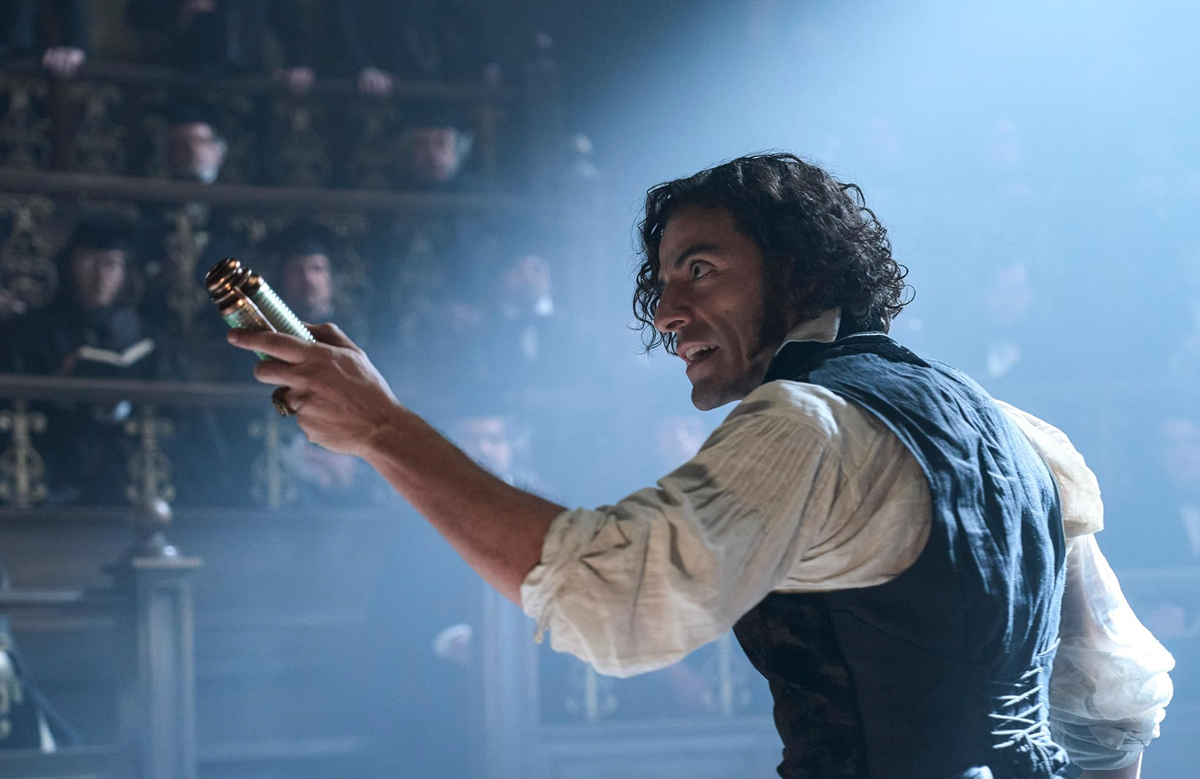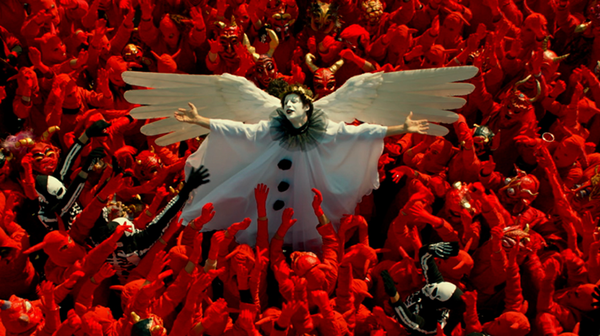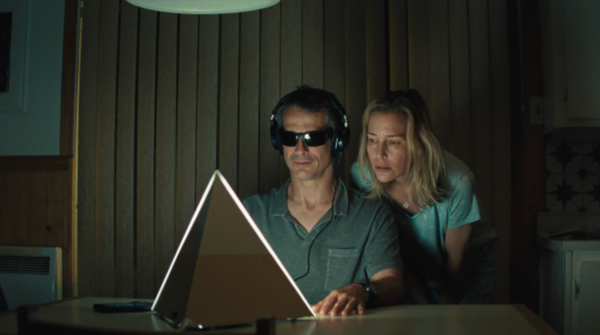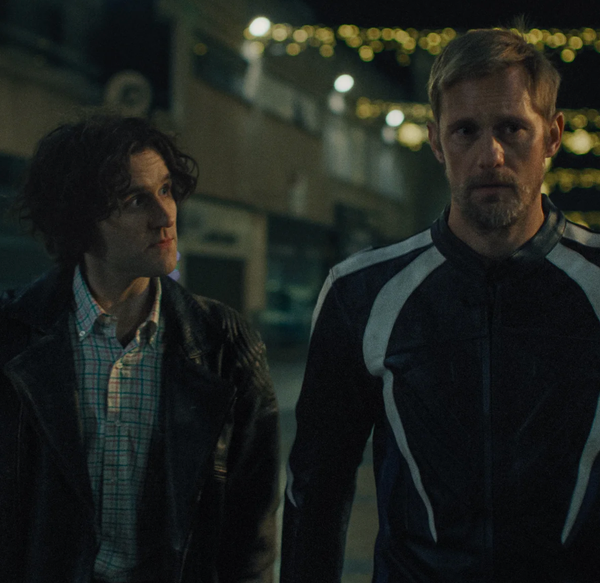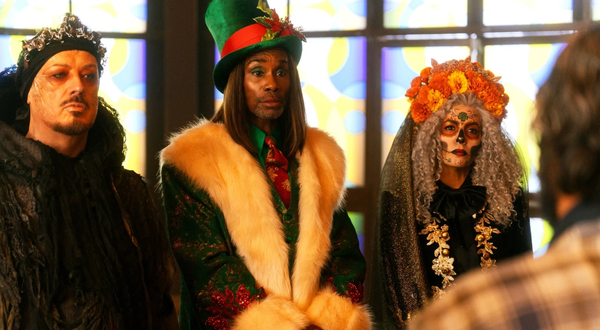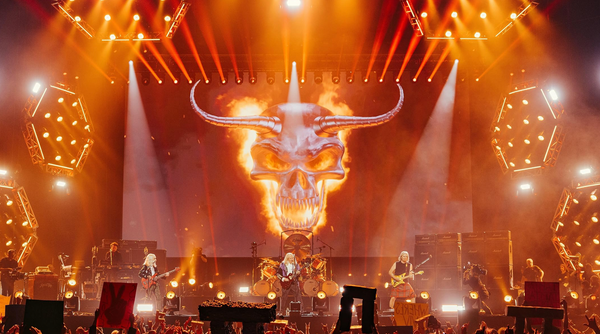On the ground in Venice, Shane McKevitt electrifies in his review of Frankenstein.
On an expedition to the North Pole, a ship is beset by ice. Led by Captain Anderson (Lars Mikkelsen), the crew stumble upon a man (Oscar Isaac) lying gravely injured. As they help him aboard, the men shudder at the sound of a monstrous howl. The source: a cloaked figure (Jacob Elordi), his face obscured by a jet-black mane. The beast bellows the name “Victor,” storming across the icy surface. As the creature nears the vessel, Anderson fires a shot into the ice. It crumbles under the feet of the monster, plunging him into the frigid abyss. The wounded man, by the name of Victor Frankenstein, warns the sailors the abomination will return, and that their only recourse is to offer himself as a sacrifice. He then narrates his life to the captain and, through flashbacks, we witness the events which lead to this dire predicament.
After his mother dies in childbirth, Victor becomes hellbent on finding a way to circumvent humanity’s natural frailty. This is in spite of his father, Leopold (Charles Dance), who imposes a cruelly pragmatic view of life and death. As an adult, Victor’s experiments catch the eye of Henrich Harlander (Christoph Waltz), an arms merchant, who offers to finance his research. We watch as Victor hooks organs up to wires, contorts limbs, and dissects cadavers, all in an attempt to crack the code of human life. His brother, William (Felix Kammerer), is engaged to be married. Victor and William’s fiancée, Elizabeth (Mia Goth), soon develop a mutual attraction; she assents to his morbid curiosities, and it is their mutual fascination that leads to Victor’s eureka moment. Since saying goodbye to his mother, Victor has been dreaming of this day, the day he creates life out of death. The havoc wreaked by his creation goes beyond his wildest dreams.
Guillermo del Toro’s Frankenstein is the latest adaptation of Mary Shelley’s 1818 Gothic horror novel. It adheres closely to the source material, spinning an epic tale of science-fiction horror, ripe with a series of colourful characters and gorgeous set pieces. Aside from Shelley’s text, the film perhaps shares the most in common with Kenneth Branagh’s 1994 reimagining, which similarly shifted between Victor’s dying breaths and flashbacks to his life story. Likewise, both films ditch the square-headed, stiff-armed creature immortalised by Boris Karloff in 1931. Here, Frankenstein’s monster is a pale, ghoulish figure, embodying the morbidity of a man crafted from discarded corpses. With his performance, Elordi personifies the beast’s vengeful rage while maintaining the sympathetic, confused innocence fundamental to the character.
No expense has been spared on the production design. As Victor scrambles the streets of Edinburgh, hundreds of extras populate a lived-in world of depravity. The use of wide-angle lenses allows cinematographer Dan Laustsen to exhibit the eerie locales with magnificent scope. Victor’s laboratory, a repurposed irrigation tower, stretches like a skyscraper into the perpetually stormy sky. Inside, its shadowy concrete halls and dim, subterranean vaults seem to stretch on forever. Victor’s workshop is populated by strange tools, machinery, and countless containers of peculiar liquid. The scenes of the rampaging monster are effective in demonstrating the beast’s immense power, emboldened by the sound design; we hear every tear of flesh and crunch of bone. These moments favour slick, energetic visuals over taut suspense. One scene in particular, wherein the monster fends off a pack of wolves, feels pulled straight from an action film rather than horror. Instead, it is Victor’s construction of the beast, particularly the period of trial and error prior to his eventual breakthrough, that crafts the most suspense, as well as grisly imagery. Unfortunately, these moments are fleeting. Room could have been made for more scenes of Victor collecting specimens, piecing together body parts, and testing his experiments.
Oscar Isaac deftly encapsulates Victor’s manic, single-minded obsession. However, his journey into madness is almost immediate, leaving nowhere for him to descend to. Mia Goth is a good counterpoint to Victor, a gentle touch juxtaposed with his frantic compulsions. After an intimate, human moment with the creature, she begins contending with Victor’s egocentric attempts at playing God. The film’s emotional weight ultimately rests on her realisation of the horror of his actions. The dialogue is melodramatic by design; it melds well with the oft-operatic visuals but does so at the expense of nuanced emotional beats. Though at times overwrought, Frankenstein is a macabre spectacle that brings its source material to life.
Frankenstein premiered at the 82nd Venice International Film Festival on 30th August 2025.

